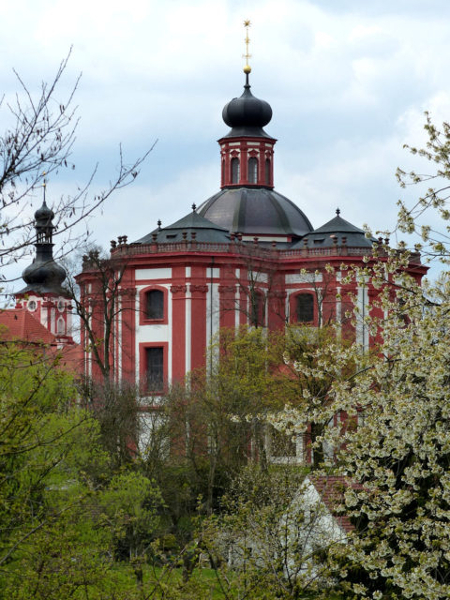Originally a shrine to the Virgin built by the Cistercian order from nearby Plasy, the Church of the Annunciation at Mariánská Týnice rises impressively from the open countryside of Western Bohemia, just north of Plzeň.
The records tell that a landowner named Roman bequeathed the land to the abbey in or around the year 1230; over the course of the next four centuries, on the spot where numerous pilgrims came regularly to offer thanksgiving, there arose a number of churches, each more grand than the last.
In 1707, abbot Eugen Tyttl called on the Prague-born architect Jan Blažej Santini-Aichel to develop the church and its associated cloisters. At the age of 30, Santini’s expert hand was already transforming the baroque landscape of Bohemia into a geometric fantasy, his organic designs pushing the boundaries of line and space like some eighteenth-century Gaudi.
But this church, despite its enormous dimensions, is altogether more classical in concept. A truncated Greek cross, decorated inside and out with ionic pilasters, and topped with an enormous dome, the building was strictly a work of the high baroque. Construction continued well into the 1760s, and the whole complex was completed forty years after Santini’s death.
Ironically, the Edict of Tolerance – introduced by the Austrian Emperor Josef II to placate religious communities (and thus to avoid economic emigration) – spelt the closure of many Catholic churches, including this one, in 1785. It gradually decayed, its materials were cannibalized to rebuild the convent in Plasy, until in 1920 the arches and great dome itself finally caved in.
The restored interior of the early 2000s is somewhat colourless (in spirit and palette), with the exception of the enormous trompe l’oeil altarpiece in the southwest chapel which gives some indication of the impression the church would have made when originally completed.
Published by the Prague Vitruvius.
published: 24. 4. 2017







